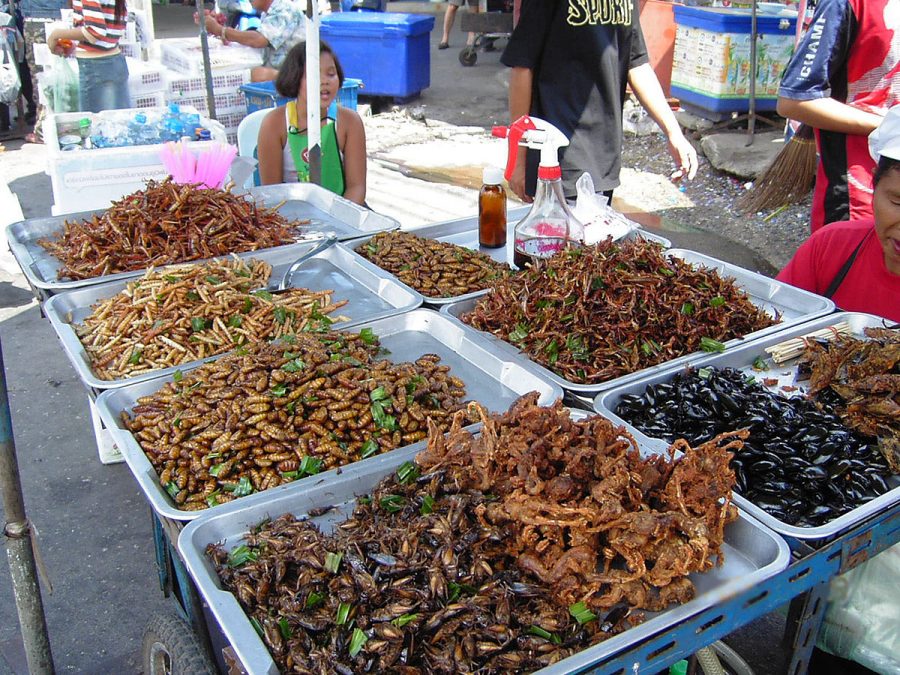Benefits of Bug Eating
March 9, 2020
The image of eating bugs has been looked at with disgust and met with the action of gagging. The action of eating bugs is called entomophagy. Eating bugs has been part of an everyday diet and still is in most parts of the world, such as: South America, Africa, Asia, Australia, and New Zealand. That is 80 percent of the world actually participating in entomophagy. And through the evolution of food and cooking, western nations have adapted to look at disgust on the action of eating bugs and will avoid it as much as possible.
Why should you still eat bugs today? Well, eating bugs is actually very beneficial for the environment. In a 200 calorie serving, crickets have more protein, more fiber, more vitamins, and less fat then both fish and cattle. The farming of insects takes up less land than cattle, less water, and less feed. Right now, 70 percent of freshwater goes to farming and over 70 percent of the corn produced in the U.S. goes to feed the animals. However, if insects were farmed they would need five times less than what cows would need. This means that crickets are cheaper to produce and would be cheaper to feed. So overall it is also good for the environment and for preserving human resources.
Entomophagy is actually less likely to make you sick than cattle. This is because insects are taxonomically distant to humans so they can not spread diseases as easily as any meat that we eat today. Insects are also less likely to spread disease even if in a confined area, so the spread of diseases will also lessen as a result of entomophagy.
There is also the fact that insects are everywhere. Though you might be thinking that there is actually a chance of eating a poisonous bug, this is not the case. Only one percent of all the bugs on the plant are harmful to humans. The chances of picking up a harmful bug is extremely low.
Next time you see a bug, think of it as a meal instead of another pest because 80 percent of the world already does.









